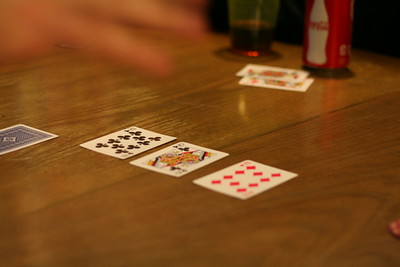Flop Poker Strategy Introduction
It’s where Texas Hold’em starts to come alive isn’t it? Pre-flop hand selection is all well and good but what you make when the flop comes is when action develops. It’s where you can start to get a feel for your opponent’s likely ranges, deciding whether you want to continue and assessing the texture to determine whether a bluff might work. This article will look at the key factors of playing the flop that will help shape your decision making when playing flop poker in Texas Hold’em.
What is a flop in poker?
The flop is the first 3 community cards that are dealt face up. Players use them with their hole cards to make a 5 card poker hand.
Texture
There are so many possible flop textures to list but we can condense this to 3 types; dry, wet and mixed flops. Dry flops are very disconnected with no potentials for straights or flushes. A wet board is draw heavy or already presents potential for straight and/or flush. Finally, a mixed board is somewhere in the middle, with possible draws but not both. The texture of the flop should be a heavy consideration when choosing how much money to invest in your hand. It’s complex isn’t it? Texas Hold’em is not a simple game to play, if you want simplicity, try 3 card poker instead.
Example:
Pocket aces (Ac-Ad) look great but are very vulnerable on a board like 7h 8h 9h. Contrast this to a board of Kc 2s 2d and you can start to appreciate the importance of relative hand strength.
How good is your hand on the flop?
A basic question but one that must be asked. How good is your hand when you’ve got to the flop? Do you have a top pair? Only have 2 overcards? Are you on a flush draw? Your hand value can be converted to represent the following groups.
| Hand Type | Strength | Decision Making |
|---|---|---|
| 2 Pair or better | Exceptional | You’re in it for the long haul. Strap yourself in and bet lots. |
| Over-cards and a straight or flush draw | Very strong | This hand is has fantastic equity against most hands and should rarely ever be folded on the flop. You’re never in bad shape and actually a favourite against top pair hands. |
| Top pair | Relatively strong | Top pair is a good hand but consider texture and number of opponents. You will often stick around past the flop but tread careful. |
| Straight/Flush draw | Average | You will often try to peel a turn card off but remember it’s just a draw. You generally want position and bluffing opportunities too to make these calls profitable |
| Second pair | Average | Second pair is often worth a flop call particularly heads up. The more players involved, the weaker the value. Keep the pot small and look for thin value if it’s checked down to river. |
| Bottom pair/ underpair | Weak | Bottom pair or underpair can win heads up in small pots but very rarely when multi-way. |
| Overcards | Very weak | Beginners seem to have trouble releasing big cards even they miss. If you have no draws and just 2 big cards, get out of the way, you have nothing and are beat by a pair of 2s. |

Flop Poker Tips
If you are new to poker and want some tips on flop poker. The list below is a basic overview of what to do when you get to the flop.
- Miss the flop – get out the pot
- Top pair is good but remember your kicker. The second card may be beat by your opponent
- If top pair is a low card, you can still be beat by overpairs
- Flush or straight draws are at best 36% chance to hit by the river. If your opponent is trying to force a big pot or get you all in, you should fold
- If you raised pre-flop and are heads up – bet most flops. Check out our article on continuation betting for more detailed tips
Small hand, small pot. Big hand, big pot. Remember this and you won’t go far wrong at low stakes.
Subscribe to Newsletter
Receive special offers, news, latest articles and free material by joining our exclusive subscriber list.



